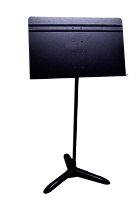Many band directors that are not native clarinet players have difficulty teaching their clarinet students how to effectively and easily reach the high notes, known throughout the world as "above the break." Playing above the break seems quite natural to those of us that have mastered the art, yet telling a new student how to achieve the same effect is a lot more difficult. Consider these useful tips that are intended to help anyone do better at playing clarinet high notes.
In my experience there are two things that hold back a clarinet player from reaching the high notes above A# on their instrument. First is bad finger position. Second is instrument malfunctions or limitations.
Playing High Notes On Clarinet- Good Finger Position
The thing that makes playing high notes so frustrating for many clarinet players is that they are able to play almost every note on the instrument below the break without any trouble, but adding the register key seems to make things go horribly wrong. Low notes on the clarinet are more forgiving to finger alignment problems. The low notes on the instrument such as low F and low E below the staff may still play even with light leaks caused by poorly poised fingers. When the register key is pressed however, many students change their hand position slightly to hit the register key rather than rolling up to it with the tip of the thumb. In doing so they open the leaks even wider and the instrument refuses to speak the desired note.
One easy way to test this is to have the student blow their low F with a good tone and volume and then have someone else touch the register key for them. Chances are that the note will pop up to the high C with no difficulty. If the student is unable to repeat this process then they need to focus on their fingers very closely. Make sure that rolling to the register key does not make other fingers move from their positions.
Another important aspect of teaching clarinet left hand finger position and right hand finger position can be tested by pressing the fingers firmly into the keys as if playing the low F. When the fingers are removed there should be a full circle visibly imprinted on the tips of their fingers. If any of these circles are only partially there, that finger is a likely cause of a leak that is preventing the student from hitting the high notes on the clarinet.
Clarinet High Notes- Other Important Factors
Aside from the more common problem of bad finger position a student clarinet player must also make sure that their instrument is in good playing condition. Even if the fingers are aligned properly they will not be able to override the effects of any bad or leaking pads or misaligned keys. It never hurts to have a clarinet looked at by a professional repair shop every year or so to adjust and maintain the instrument in its best working condition.
While there are obviously other factors that can play into how successful a student is at hitting the high notes on a clarinet the ones mentioned above have been the most common problems that I see in my teaching. Other instructors such as Shelly VanDoren have created excellent tutorials on how to teach beginning clarinet classes and her insights on crossing the break are also very helpful. You can also search for other clarinet high note suggestions as there are many other article available the subject.
